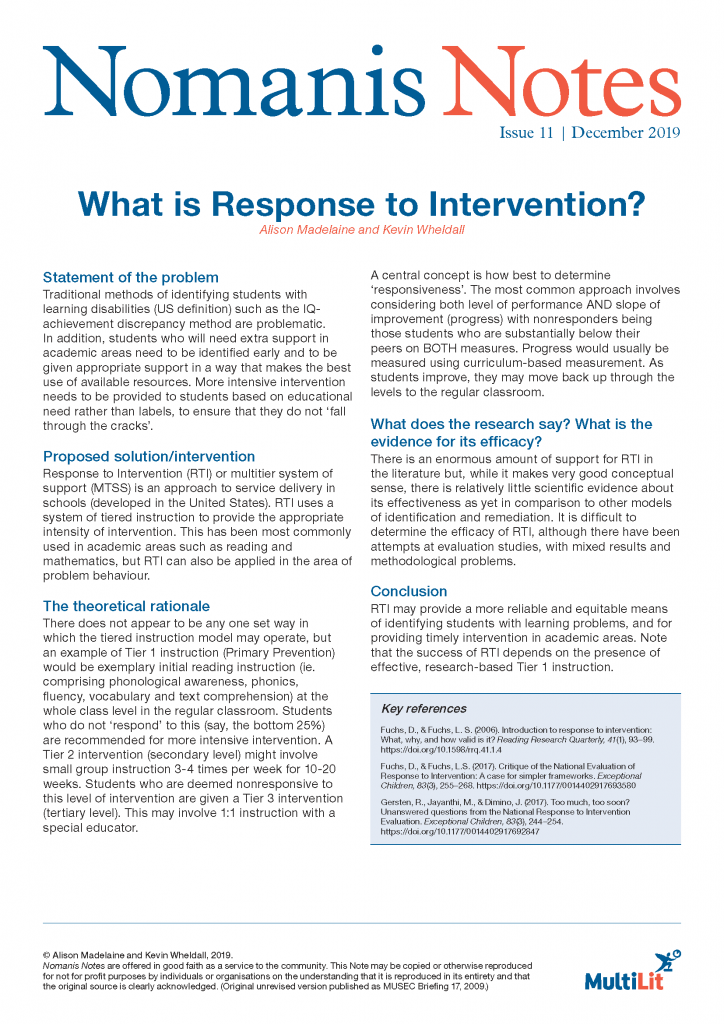Simply, “Response to Intervention” (RTI) refers to a process that emphasizes how well students respond to changes in instruction. The essential elements of an RTI approach are: the provision of scientific, research-based instruction and interventions in general education; monitoring and measurement of student progress in response to the instruction and interventions; and use of these measures of student progress to shape instruction and make educational decisions.

A number of leading national organisations and coalition groups, including the National Research Center on Learning Disabilities and the 14 organizations forming the 2004 Learning Disabilities (LD) Roundtable coalition, have outlined the core features of an RTI process as follows:
- High quality, research-based instruction and behavioural support in general education.
- Universal (school-wide or district-wide) screening of academics and behaviour in order to determine which students need closer monitoring or additional interventions.
- Multiple tiers of increasingly intense scientific, research-based interventions that are matched to student need.
- Use of a collaborative approach by school staff for development, implementation, and monitoring of the intervention process.
- Continuous monitoring of student progress during the interventions, using objective information to determine if students are meeting goals.
- Follow-up measures providing information that the intervention was implemented as intended and with appropriate consistency.
- Documentation of parent involvement throughout the process.
LDA Webinar
Response to Intervention – Getting it Right for All, Right from the Start
Sarah Asome delivers a wonderful presentation about how Response to Intervention is used at Bentleigh West Primary School to improve learning for all.
Uploaded with permission.



